| s/y Nine of Cups Death Valley National Park, California May 2012 |
| Death Valley is the largest national park in the contiguous 48 states, comprised of nearly 3.4 million acres of desert wilderness. |
| The lowest point in the US is Badwater Basin in Death Valley at an altitude of -282' below sea level. It's also the hottest place with ground temp 40% higher than surrounding air temps in summer. |
| Death Valley is the hottest, driest place in the USA. In 1913, Furnace Creek recorded a temperature of 134°F, the second highest temperature ever recorded in the world. Rainfall averages less than 2 inches per year. |
| In 1849, a group of gold rush pioneers entered the valley thinking it was a shortcut to the gold fields of California. After barely surviving the trek across the desert, they named this area "Death Valley". |
| Death Valley was declared a national monument in 1933, but did not become a national park until 1994. |
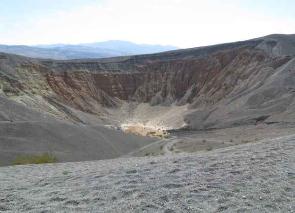
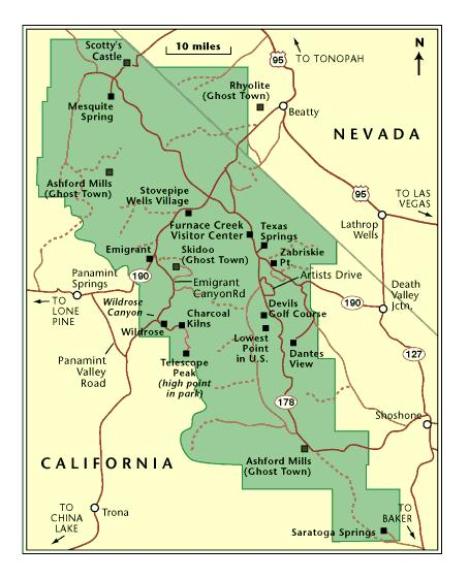
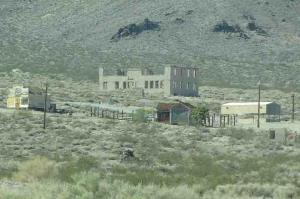
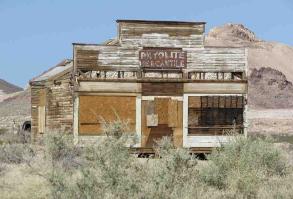
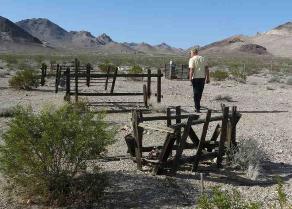
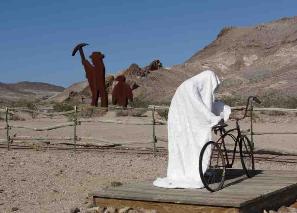
| Just outside of Beatty, Nevada is Death Valley's largest ghost town, Rhyolite. We decided to visit and since we were all alone, it really was a bit "ghostly". Established in 1905 after prospectors discovered gold, the town once had a population estimated ~10,000. By 1920, after several financial crises, the population had decreased to 14. There's not much roaming around to be done as the US Parks Service has cordoned off many of the buildings which are dilapidated...not to mention several signs with rattlesnake warnings. We did wander around in the lonesome, parched cemetery. Off the side of the road nearby, were several large sculptures just kind of sitting out in the desert. They are part of the Goldwell Open-Air Museum and were quite off the wall. |
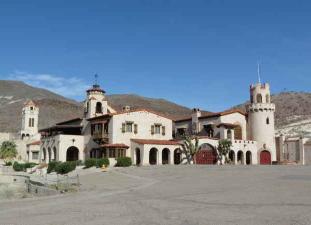
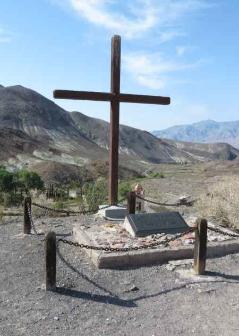

| Prospector Walter Scott aka “Death Valley Scotty”, claimed this elaborate Spanish Colonial Revival style villa located in the Grapevine Mountains of northern Death Valley was built with the gold from his fictitious mine. In actuality, it was built in 1922 by his millionaire friends, the Johnsons. The villa is now part of the national park and maintained by the park service. Scotty was buried on the property at the top of the hill overlooking his castle. |
| The Ubehebe Crater was formed just a few thousand years ago by a massive volcanic explosion which left this 600 foot deep crater. |
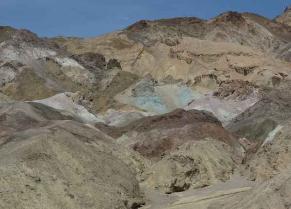
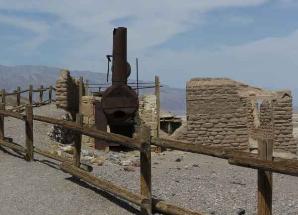
| After discovery of borax deposits in 1881, "large-scale" borax mining in Death Valley began. The Harmony operation became famous through the use, from 1883 to 1889, of large Twenty-mule teams and double wagons which hauled borax the long overland route to the closest railroad in Mojave, California. |
| So what is borax anyway? Borax, also known as sodium borate, sodium tetraborate, or disodium tetraborate, is an important boron compound, a mineral, and a salt of boric acid. It is usually a white powder consisting of soft colorless crystals that dissolve easily in water. Borax has a wide variety of uses. It is a component of many detergents, cosmetics, and enamel glazes. It is also used to make buffer solutions in biochemistry, as a fire retardant, as an anti-fungal compound for fiberglass, as a flux in metallurgy, neutron-capture shields for radioactive sources, a texturing agent in cooking, and as a precursor for other boron compounds. ...from Wikipedia |
| Death Valley Days One of the longest-running Western series, originating on radio in the 1930s, DVD revolved around western stories and legends based, and filmed, in and around Death Valley, CA . One of the hosts, actor Ronald Reagan, left his role to become Governor (then President). The continuing sponsor was "20 Mule Team" Borax, a product mined in Death Valley. |
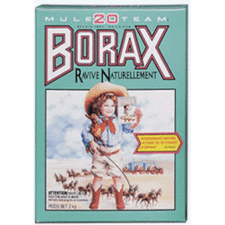
| When seen from Dante's View nearly a mile above it, Badwater Basin in the valley floor below looks expansive and breathtaking. The temperature difference was about 50°F and a welcome respite. |

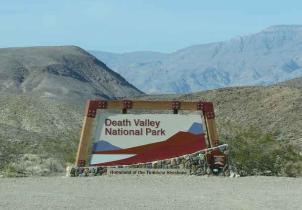
| Entering Death Valley National Park |
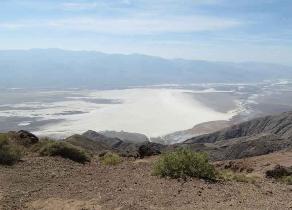
| Surviving in Extremes The Park Service issues lots of warnings and reminders about taking survival in Death Valley seriously.
|
| Artist's Drive is a scenic loop through a deep canyon cut into the Black Mountains. Above, the Artist's Palette is especially beautiful and is noted for having various colors of rock caused by the oxidation of different metals within it. Red, pink and yellow is from iron salts, green is from decomposing tuff-derived mica, and manganese produces the purple. |
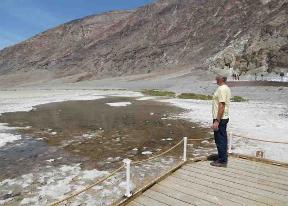
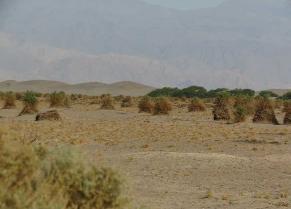

| Clumps of arrowweed at a distance in the Devil's Cornfield really do resemble corn shocks tied up for harvesting. |
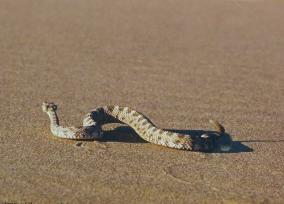
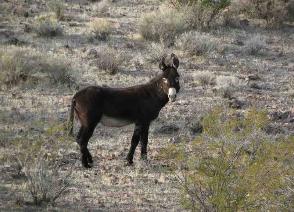
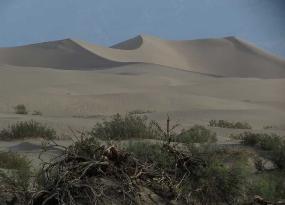
| The Mesquite Sand Dunes rise nearly a 100' from the Mesquite Flat. Ripples and ridges are accented in the sun and shadows. |
| Sidewinder rattlesnakes also like the area around the dunes. |
| Iin the early 1800's, a small number of burros escaped or were turned loose by prospectors. The burros adapted to the desert conditions quickly and their numbers soared to over 3000... not good for the native bighorn sheep who compete in the same scant grazing area. Parks Service has reduced the burro population significantly. |

| Despite the extreme temperatures and arid conditions, beautiful things thrive like the desert thorn apple datura above. Beautiful, but a deadly member of the nightshade family. |
| Though our timing was off, we are thrilled to have spent time in Death Valley. We visited at the very end of the season when the temps were rising and hiking was not prudent. We suspect that if we visited a month or two earlier, it would have been cooler and more hospitable. We missed the desert in bloom and in a 2-wheel drive vehicle we were limited as to which roads we could traverse. That said, well worth the time and effort to get there and highly recommended. Next we'll head to Sequoia and King's Canyon National Parks with a few stops along the way...like the Trona Pinnacles, for instance. Come with us...we appreciate your company. |